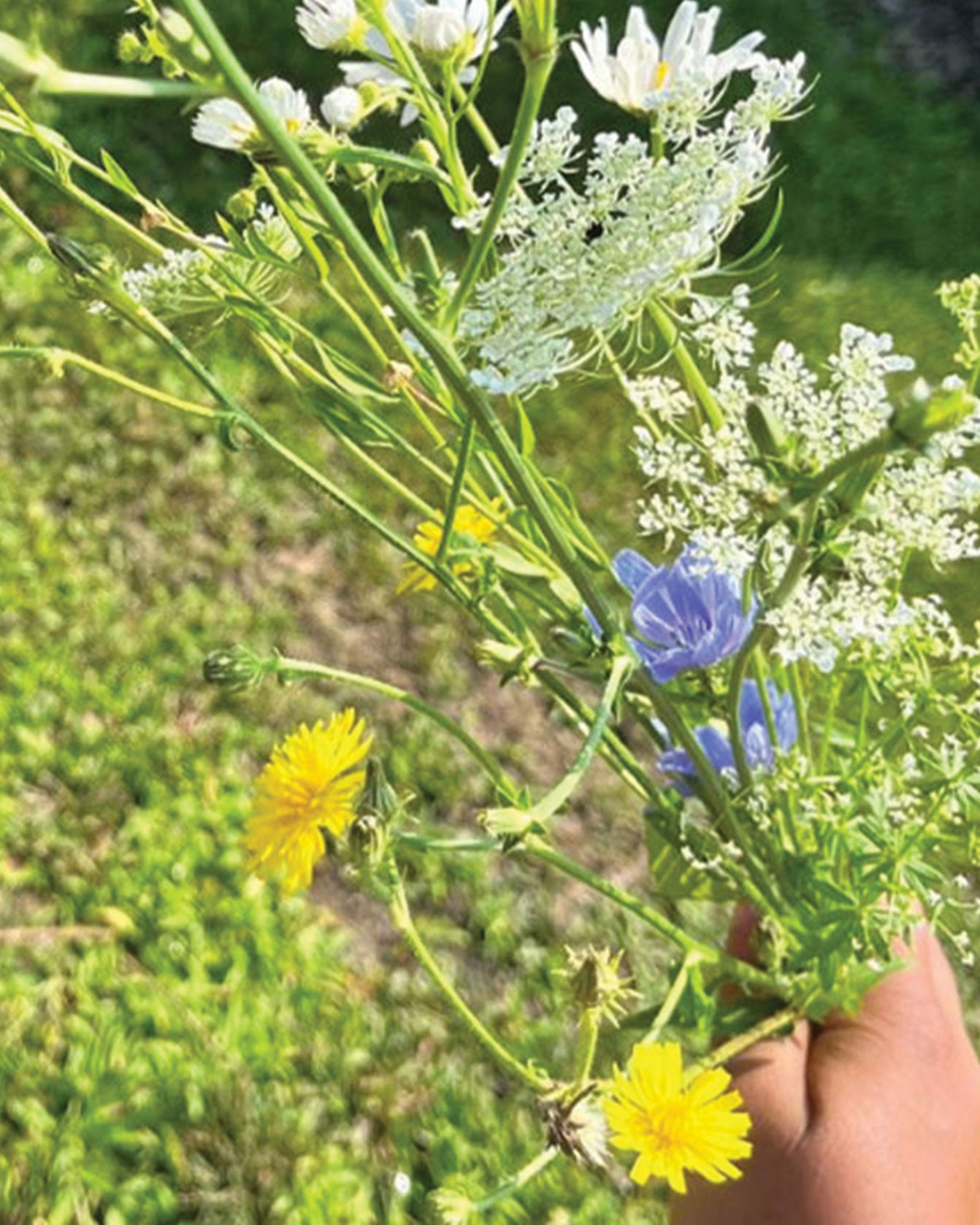In this little conversational article, Radha and Nandini, sisters who graduated from Tridha, a Waldorf school in Mumbai, reflect on their upbringing and experience of having been in a Waldorf school.
Radha: Nandini! I’m so glad to have this opportunity to reflect on our experiences at Tridha together. I know for a fact that having been a Waldorf child has made me who I am in so many ways. To sum up, which perhaps is not a good idea in itself, but nonetheless is a good starting point, I like to think that Waldorf has given me a gift of a gentler worldview where the little things and little kindnesses in the world don’t go unappreciated. Gratitude, grace and wonder seem to be common themes in so much that I took away from my time at Tridha, but as a different person I wonder if that is also true in your case.
Nandini: I agree with the fact that there is an underlying theme of gratitude, grace, and wonder - that’s a great way to phrase it. As the adult me interacts with people who did not go to Waldorf school, I am somewhat surprised that their experience of school was not nearly as beautiful as mine. Most people remember only friends that they had, but classes and what they learnt is not usually a large part of their nostalgic musings. It seems very strange to me that fond memories of school are often lived during lunch breaks, snack breaks, and outside of ‘school.’ I have vivid memories of learning the alphabet by drawing each letter as part of nature. The letter M was a proud silhouette of a mountain range that I created. I can easily bring back memories of counting rajma beans while attempting to solve what I thought were the most complex mathematical problems of the world. Intertwined with memories of ‘academic classes,’ I recall holding up my four knitting needles, connected to each other in a complex weave of vibrantly coloured yarn. As I write this, I laugh to myself. I interact with the world as an adult in the same way I was taught many years ago. An environmental scientist in the making, I look upon trees and leaves today with the same tender curiosity that was embedded in my classes as an eight year old. I still hold up my knitting needles, focus my eyes, and begin to count the rows, crossing my fingers that I got the count just right. The more I think about my life right now, the more I realise how much of my childhood I have taken with me. I wonder if this is the same case with my peers. Have you ever had a sudden moment of realisation that everything you are doing is somehow a reflection of or in a harmonic relationship with the things we did as Waldorf kids?

The letter M, a proud silhouette of a mountain range that we had created in our notebooks! Source.
Radha: Since you asked this last question, I’ve been racking my brain to think of an epiphany-like moment where it all kind of came together for me and I felt like a direct reflection of what my childhood has been, but somehow I’m not sure there has been one such moment like this. I can however attest that fairly regularly, if not daily, I find myself drawing from some learning, insight or habit that was inculcated in my childhood, especially at school. I do too still knit and crochet, especially on days when I have a lot on my mind and simply want to think, without any temptations of being distracted. It may have been just yesterday in fact, that I found myself stomping around my living room, in an attempt to entertain my two cats, that I quite intuitively broke out into a Tridha walking poem and thoroughly enjoyed myself enacting it, much to the surprise (and dread) of my whiskered audience. The poem went like this, “One misty moisty morning, when cloudy was the weather, I chanced upon an old man all dressed in leather. With a hat tied under his chin, he began to compliment and I began to grin. Good day to you, good day to you, good day to you again. Good day to you, good day to you, good day to you again!”
What a hoot! I bet when all of us 25 children in the class stomped around in a circle, emphatically narrating this poem, it must have been quite an entertaining scene to watch. Which also brings me to general waldorf aesthetics, a theme that I think there is much to be said about. The pastel coloured curtains, the minimalist, wooden furniture, the mostly bare walls have in a large way shaped the way I design and appropriate the spaces that I inhabit even today. Despite all of my peers finding much joy in their postered walls or in hand embroidered tapestries, I have over the last many years maintained walls clear of distractions that allow me to think better. I was wondering perhaps, if you would care to elaborate on the idea of a nature table and the way in which the practice of having had one, permeates your present ways of thinking and being?
Nandini: First off, I have to say, as I read that little verse, I too said it in the most dramatic way, just like we were taught! You may be surprised to know that I have actually always had an unofficial nature table in my room. In fact, last year when I got my own apartment, it even felt empty to me without an homage to our beautiful planet Earth. My present nature table has rocks I have collected, little glass blown animals, two moon lamps, and my agarbattis from back home. This summer, as I have spent it in Ithaca, I have had the glorious opportunity to feast my eyes on the natural beauty of the area and actually think that I may in fact be in love with the different colours and varieties of plants and trees that you see here. I have tried to make it a point to pick up or forage new flowers every week! The nature table, for me, has been more than just a museum of lifeless objects, but is rather a collection of stories of walks I have been on, or trees I have met, or acorns that are slightly imperfect, or of little divots left behind by woodland creatures. It is my constant reminder that there is so much to celebrate on this earth, and that fighting climate change does not have to be all doom-and-gloom, but can be a beautiful story we weave together.

Some flowers that Nandini collected on one of her nature walks in Ithaca.
Do you remember the time we went to Kashmir for a family vacation and tried to bring back a bunch of pine cones? I can easily relive the two of us staring down at a bucket of sticky water with little particles of pine floating at the top. We were in the hotel’s bathroom as we tried desperately to clean the pine cones so that we could take them back in our bags. I think I didn’t get the resin off myself for days together! Now, I live among pine trees, but every time I see a pine cone fallen on the side of the road, all I can think of is how the security agents at the airport had probably never been more surprised than to see my bag half-filled with pine cones! I remember when I got back to school (not a Waldorf school), I paraded them around proudly, and even convinced my biology teacher to make the class draw them during the same lesson! When mom came to visit me earlier this year, I saw her try to pick up pine cones to bring them home, and realised just how much she shaped the waldorf experience for us too! I guess that brings me to my next question, do you feel like our classmates at school took away as much from a Waldorf experience at school as we did? What do you think has allowed us to carry this outlook until much later, and do you think our friends have done the same?
Radha: Oh! Nostalgic musings are fun! The pinecone story is a very sweet memory that perfectly illustrates some of the values and fascinations we have developed as waldorf children. I think other than Kashmiri kahwa and one of those poncho-like warm coats, our biggest mementos from Kashmir were those pine cones themselves! Interestingly, about three of those are still sitting on a small little shelf right before my eyes for, if you must know, I too have, in my own way, retained the practice of having a nature table. For me, the act of having one actually, is almost like giving the earth and nature representation in my life and my thoughts.

A basketful of pinecones that reside in our home balcony to this day!
Coming round to your question of our mother, I definitely think she has had a huge role to play, not only in reinforcing everything we were taught at school but also by demonstrating ways in which to imbibe and apply those learnings. I don’t know about you, but for me she has always been a symbol of strength and kindness and on so many occasions her grace has actually astounded me. I personally don’t feel that I would have internalised as much of my Waldorf education as I did, had it not been for our mother, being who she is. Which also in some ways serves to answer the next part of your question which is to say that perhaps not everyone took away from Waldorf schooling as much as we did, or at least not in much the same ways as we did. I think evidence of this can be found in the fact that here we are, the two of us, writing an article about our Waldorf experience, in hope to share it with the world and inspire more parents and children to embark on this beautiful journey together.
Nandini: That is what I was thinking as I posed the question to you. I agree with the fact that it takes so much more work outside of the Waldorf school for a child to completely have a lived Waldorf experience, and our mother did a great job of providing that for us. I remember every day when we got back from school at 4:30 in the evening we would sit down, wash, cut, and eat fruits while talking about our day. What a beautiful little routine that was. It helped us to pause for a minute and reflect on our day while expressing ourselves in the same way we were taught to do in school. When I think about our mother, the adjective that has always stood out for me is grace to describe her. As an adult when I speak with her, I realise how tough it was for her to put us through an alternative education; not only internally, but also all of the societal pressures of us not learning things at the same time as other kids or ‘wasting’ time on things like handwork or gardening. Instead of letting that get to herself or us, she nurtured us, and embraced everything that the waldorf philosophy has to offer. I owe a lot of what I am, my values and the core of my identity, to her ability to stay strong in her convictions and show us only love, grace and hope, echoing every ounce of the beautiful lifestyle that is Waldorf.

Nandini’s class performing a graceful eurythmic song on Tridha’s annual day many moons ago.



Leave a comment